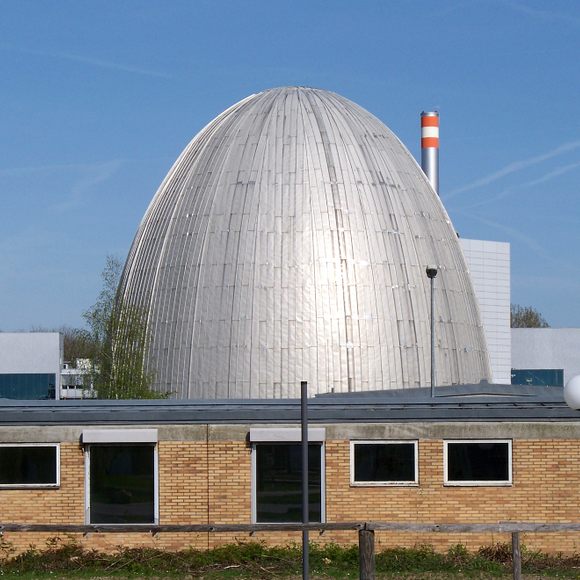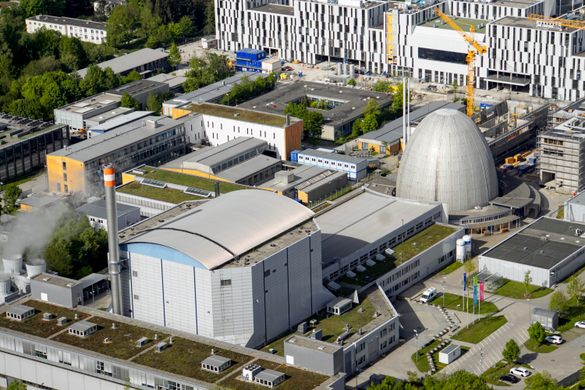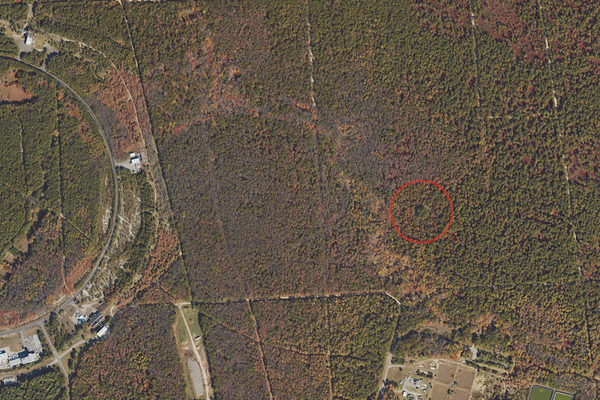AO Edited
Atomei
This "Atomic Egg" appears on the city of Garching's coat of arms.
The city of Garching bei München (also known as Garching) has become known as the location of a rather large research campus that includes several Max Planck Institutes, Technische Universität München Garching (Technical University of Munich Garching or TUM Garching), the European Southern Observatory Headquarters, and two facilities operated by the Bayerische Akademie der Wissenschaften (Bavarian Academy of Sciences and Humanities). Research at two of the Max Planck Institutes led to Nobel prizes, and multiple other Nobel laureates are associated with the research institutions in the city. However, all of this research activity started with the construction of the iconic Atomei, or “Atomic Egg,” a building that is both so historically important and architecturally iconic that it symbolizes the research campus and even appears on Garching’s coat of arms.
The area around Garching has been inhabited for at least several thousand years, but up until after World War II, the location had been a non-notable farming village to the north of Munich. However, in the 1950s, cabbage fields to the north of the village were selected as the site of West Germany’s first nuclear reactor. Under the leadership of physics professor Heinz Maier-Leibnitz at TUM Garching, the building was constructed between 1956 and 1957. The building had been designed by Gerhard Weber, an architect who had previously been associated with the Bauhaus School and who was a professor of architecture at TUM Garching from 1955 to 1974. Consequently, the building had an unusual modernist, space-age flair. The center of the building featured a distinctive egg-shaped metallic dome that earned it the nickname Atomei, although the building was formally named the Forschungs-Neutronenquelle Heinz Maier-Leibnitz (FRM).
The Atomei functioned as a research neutron source for several decades. Initially, it was a cutting-edge nuclear research facility, and it underwent a couple of upgrades in the 1960s to maintain this status. By the 1980s, however, the facility was no longer competitive with other research facilities, and plans were initiated to construct a new one. Once approval was granted for Atomei’s successor, which would be designated FRM-II, the reactor in Atomei was shut down.
Fortunately, the end of nuclear research within Atomei itself did not lead to the demolition of the building, which has been listed as a historical structure. FRM-II was constructed adjacent to the Atomei, while the interior of the dome was gutted and refurbished. Although now surrounded by many other newer buildings on all sides, Atomei still stands as a symbol of 1950s science research and futuristic architecture.
Know Before You Go
The research campus to the north of Garching is easily reached by car, by bus, or by line U6 on Munich’s U-Bahn. However, access is restricted to the part of the campus where both Atomei and FRM-II are located. FRM-II does provide guided tours of their facilities, but visitors must follow a series of strict rules that have been set for both safety and security concerns, and children, pregnant women, and nursing mothers are not permitted access. For visitors who are unable to schedule a tour, Atomei can still be viewed from the area to the west of the security fences.















Follow us on Twitter to get the latest on the world's hidden wonders.
Like us on Facebook to get the latest on the world's hidden wonders.
Follow us on Twitter Like us on Facebook